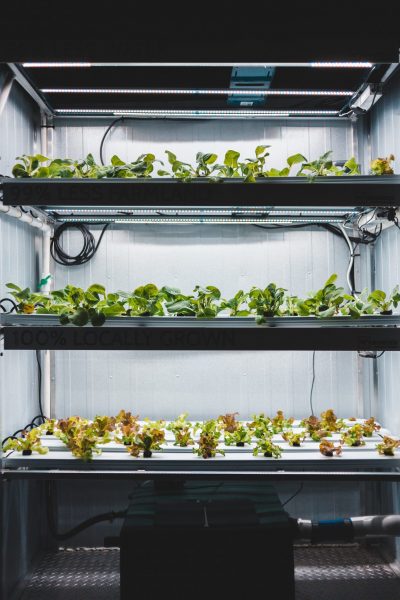

Implementing Carbon Dioxide Enrichment in Hydroponics Growing
Whether it’s backyard gardening, a greenhouse or mass produce production, hydroponics is an ancient method of agriculture that sustains plants with nutrient-rich water rather than soil.
Dating back to the time of the Babylonians, lush gardens cascaded the sides of palaces and temples, fed by canals and aqueduct systems in the middle of the desert. The Babylonians paved the way for soil-free growing, and thousands of years later NASA would use its same methods onboard a space station to experiment with growing beans.
Today, this agricultural system is being used to fight the root issues of poverty in nations that lack land, viable soil, or whose environments are too harsh to sustain certain crops. There are various types of hydroponics growing systems that excel in efficiency, one of which is using carbon dioxide enrichment to harvest even greater yields.
What Makes Hydroponics Efficient?
Contrary to popular belief, soil is not a required element of photosynthesis. In fact, soil presents greater problems for plants including plant illnesses, mold, a breeding ground for pests, weeds, and the need for pesticides and herbicides. Removing soil allows for much cleaner, healthier plants.
Submerged in water, root systems do not have to search through soil for any nutrients they can find to absorb. Instead, plants receive nutrients added directly to the water itself. Growers know exactly how much and which nutrients their plants are soaking up, all while providing less maintenance.
Hydroponics is a better agricultural alternative that in the long run uses 90 percent less water than traditional applications. Overall, hydroponics produces less waste since it runs on a filtration system, costs less money, and grows larger, more flavorful plants in less time. When done in a greenhouse environment rather than outdoors, they can avoid seasonal downtime as they are protected from the elements. There is no longer the need to wait for watermelons or other produce to be in season. While these systems are great on their own, there is one element that can be added to the process for an extra boost.

Carbon Dioxide Enrichment
When done right, hydroponics systems are fairly self-sustaining. The appropriate amount of light, nutrients, and humidity monitoring will create the ideal environment in any grow room. Combined with each of these elements, carbon dioxide can also be used to enrich traditional hydroponics systems.
Carbon dioxide is not added to the water itself, but rather the environment. Plants require the oxygen in the water but are able to absorb more CO2 in saturated grow rooms. CO2 naturally increases humidity, adding moisture to aid greater yields year-round in all climates and in all seasons.
As a safety precaution, CO2 enriched environments should remain under 1500 PPM. This is the maximum level that can create a 20 percent increase in yields. Anything greater runs the risk of killing the plants and can be deadly to humans. With the right ventilation and CO2 regulators, growers can manually control the flow rate from cylinders. However, growers should spend minimal time in the environment, limiting themselves to shorter increments and disabling the flow of CO2 before entering.
Carbon Dioxide Enrichment Through Rocky Mountain Air
In the semi-arid climate of states surrounding the Rockies, hydroponics systems can sustainably source crops year-round. Rocky Mountain Air provides carbon dioxide tanks and cylinders, which are the best options for hydroponics applications. We serve Colorado, Utah, Idaho, Wyoming, and Nebraska. Whether you are a backyard hydroponics enthusiast, work in the agriculture industry, or are experimenting in a nonprofit context to take hydroponics systems overseas, we can assist you in producing greater yields through carbon dioxide enrichment.
Contact your local branch today to inquire about carbon dioxide supply partnerships. We look forward to serving you!



